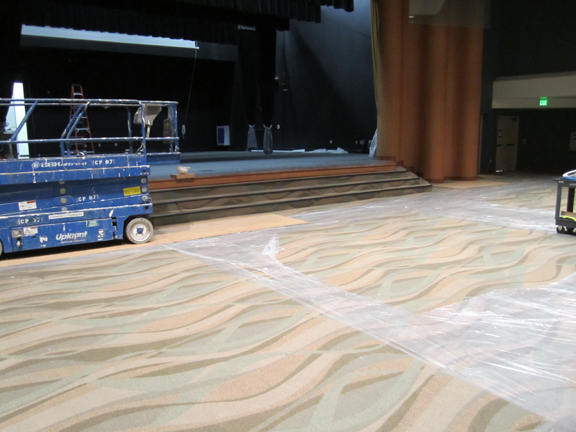So the big tragedy of non profit arts organizations is that while we are the champions of creativity, we don’t really provide all our employees the most conducive environments for being creative. Sometimes good things happen despite us. Because the workload to personnel ratio is usually slanted in favor of the work load, there often isn’t a lot of opportunity for people to stand back and do some creative problem solving that might result in the alleviation of some of the work load.
A recent post on the Drucker Exchange criticized the industrial age view that long hours and great effort equates to productivity when that simply is not so any more. Andrew Fuqua recently made a related post on the benefit of “slack” in the work place. His post was generally about the computer programming industry, but there were many lessons non-profit arts organizations can take away.
One of the things he says a programming company should do is, “managers must stop assigning tasks.” Instead, it is up to teams to decide how the work will be done. Of course, for non-profit arts organizations, this assumes there are enough people to comprise a team rather than 1 person (or half person departments). But essentially he says, managers shouldn’t be making assignments, handing out work or be an individual contributor.
“Well, gosh, then what should a manager do? Well, I’ll tell ya! You could manage more people. You can still step in when the team needs help (but not too quickly). You are still an agent of the company, handling legal stuff, signing off on expenditures, etc. You can still manage risks, especially if you are a skilled Project Manager.”
Even if that doesn’t sound like something that is viable given the size of your organization, there are other things he suggest that are definitely applicable.
“Keep an eye on the system, looking for improvements
Ensure cross-training is happening (not by making assignments, but making the team handle it)
Understand the dynamics of the organization
Understand how value is created
Protect the team from interference
Make the organization effective; learn to look at it as a system
Support the team
Clear roadblocks
Watch interpersonal interaction — watch when one team member pulls back, withdraws in a brainstorm (for example)
Help the team learn TDD by making room for them to learn (time – remove the schedule pressure while they learn)
Understand the capacity of the team (also a team and scrummaster job)
Think through policies, procedures and reward/review systems and improve them (what messages do they send?)
Understand what motivates knowledge workers (see the previous reference to Pink) and let creating that kind of environment be an imperative”
Arts organizations can definitely benefit from looking at the dynamics of the organization and looking at themselves as a system of interrelated and interdependent parts rather than different segments performing different functions. This approach will help the organization understand where the value they possess lies. It may not only be the stuff you are selling tickets to, but in the expertise that is possessed by the group.
You will see a lot of these factors mentioned as valuable in management texts. The one suggestion Fuqua makes that jumped out at me was in regard to watching when a team member pulls back and withdraws in a brain storm. That can say a lot about the interpersonal dynamics of the organization. It may be viewed as one less person providing opposition to your ideas, but it could be damaging to the organization long term to have someone feel disassociated from the rest of the organization or team.
You might note that Fuqua references Daniel Pink and his talk about what motivates knowledge workers. That motivation is autonomy which repeated studies have shown is more effective than cash rewards.
One of the things Pink talks about is a Australian software company, Atlassian, which periodically gives their employees 24 hours to work on whatever they want. The only proviso being that they share it with the entire company at a party they throw at the end of that period. Apparently the practice has contributed to the solving of a number of problems and the creation of new products.
Imagine what might be produced if you let a bunch of creative arts people loose of their everyday constraints for 24 hours with the promise of beer at the end!
One of the things I know is very important to a lot of people I work with in the arts is professional development opportunities. Again, this is something Fuqua references. Often the biggest thing inhibiting arts people from getting the professional development is the funding. One solution to this problem goes back to my comment a few paragraphs ago about understanding that the value possessed by the organization may not solely reside in the product you are selling to the public.
Your organization may possess expertise that is valuable to other arts organizations and for profit businesses. You might arrange for a cooperative professional development day where all the arts organizations get together and have their staffs provide learning opportunities for each other. You might be able to likewise trade your expertise to area businesses in exchange for training or advice.
Best of all scenarios–your organization (or cooperative of arts organizations) puts together training programs to sell to businesses based on your expertise. Perhaps seminars in team building, creative brain storming, or the selection and lighting of visual art in commercial office spaces.






There is another way. The Gewandhaus Leipzig in Germany (concert venue) offers flex- tickets for a small premium. Not an…